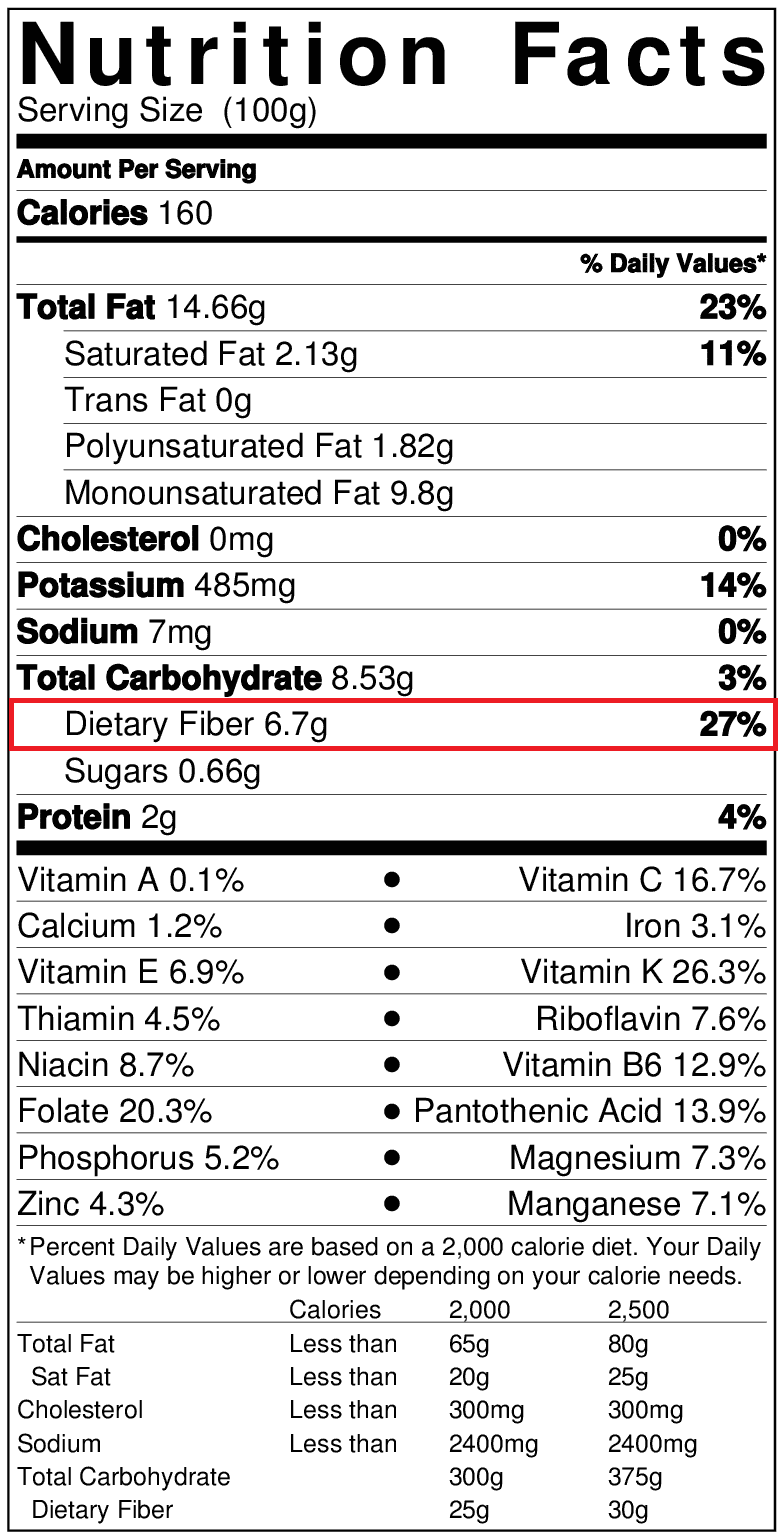Recommended Daily Intake
“Of the under-consumed nutrients, calcium, potassium, dietary fiber, and vitamin D are considered nutrients of public health concern because low intakes are associated with health concerns.” – Dietary Guidelines for American 2015-2020 (8th edition).
In the United States, the recommended dietary fiber intake is 14g/1,000kcal. For an average adult, this means a daily intake of 25g (female) or 38g (male). Most Americans only consume about half of the recommended intake (13.5 and 18g, respectively). This shortage in our diet is called the fiber gap.
Given Americans’ current eating habits, closing the fiber gap without consuming fiber-enriched foods would also mean significantly increasing calorie intake. To reach the recommended fiber intake without fiber-enriched foods, most Americans would need to increase their calorie intake by more than 500 calories per day. But meeting fiber requirements doesn’t have to mean adding calories if fiber enriched foods are consumed. Studies have shown, for example, that enriching grain foods with fiber (2.5g–5g) resulted in a fiber intake of 24.7g–39.1g/day with no caloric increase. (Nicklas et al, 2011; Jones, 2014)
Fiber-enriched foods help bridge the fiber gap while delivering excellent taste and additional metabolic benefits. The overall diet should have a mix of various fiber types.
Consuming a Variety of Fibers
Although most fibers will have more than one health-related effect, no one fiber can produce every potential health benefit. Some effects are well recognized for a large number of different fiber types, while others can be very fiber specific. To maximize the health benefits of fiber, it is important to consume a variety of fibers.
Fibers can be found in many different foods. The amount of fiber per serving can easily be found by looking at the Nutrition Facts Panel for the Dietary Fiber line.

Additionally, the fiber content in foods like raw fruits and vegetables that do not have a nutrition label can be found here.
Gastrointestinal Tolerance
Increasing fiber intake suddenly, particularly in individuals consuming a low fiber diet, may result in gastrointestinal effects, such as an increased number of stools per week, having softer stools (but not diarrhea) or having increased flatulence. These effects are due to either bulking effects or due to the fermentation of fiber in the gastrointestinal tract. These potential effects can be minimized by increasing fiber intake more gradually to allow the gastrointestinal tract to adapt. Thus, it may be helpful to decrease fiber intake until these feelings subside and then gradually increase fiber intake until the recommended intake of 14g/1,000kcal is achieved.


